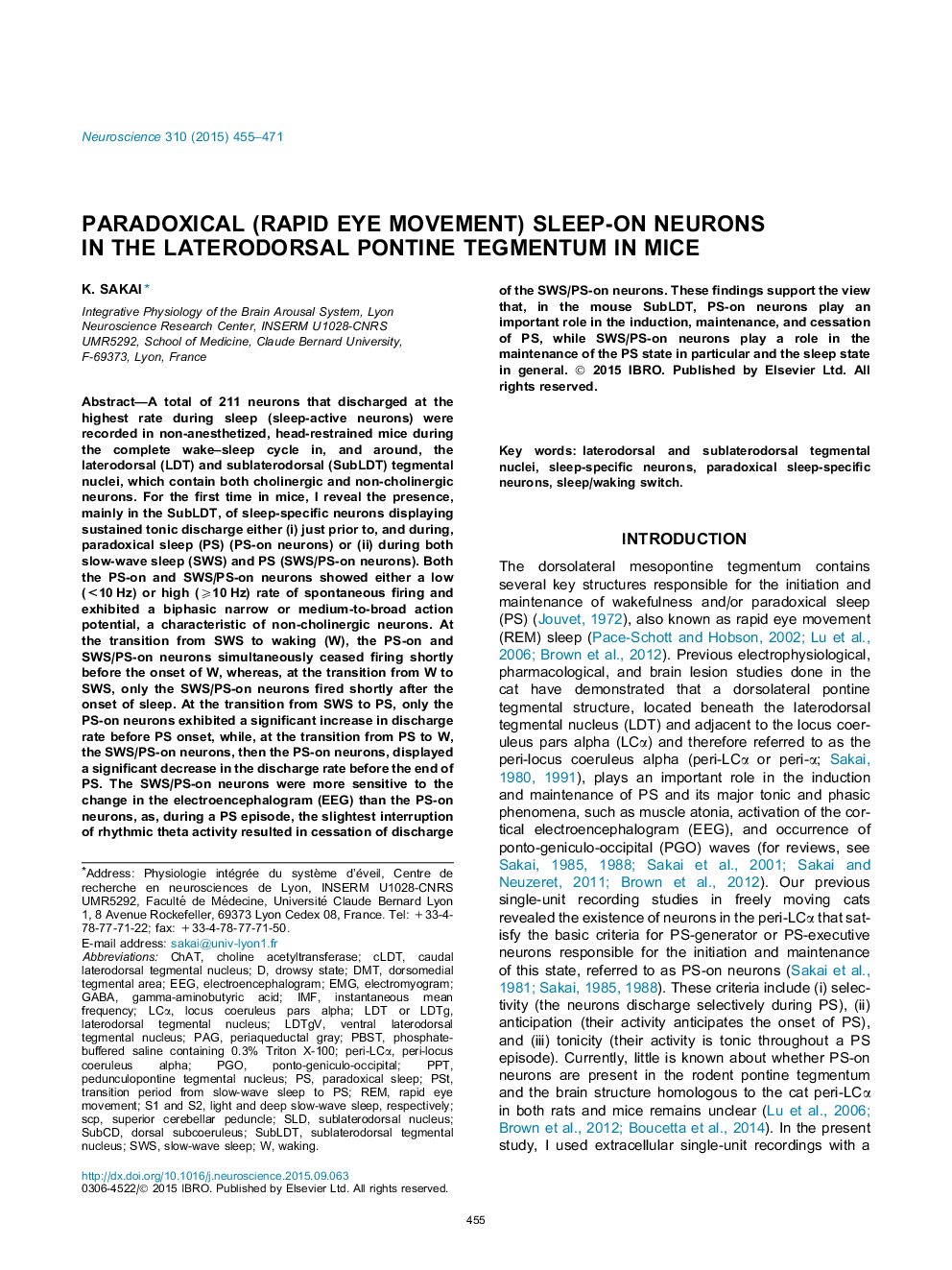| کد مقاله | کد نشریه | سال انتشار | مقاله انگلیسی | نسخه تمام متن |
|---|---|---|---|---|
| 6271547 | 1614766 | 2015 | 17 صفحه PDF | دانلود رایگان |

- The mouse SubLDT contains both PS-on and SWS/PS-on neurons.
- PS-on and SWS/PS-on neurons are heterogeneous.
- PS-on neurons may play an important role in PS generation.
- SWS/PS-on neurons may play an important role in the sleep switch.
- The mouse SubLDT may be homologous to the cat peri-LCα.
A total of 211 neurons that discharged at the highest rate during sleep (sleep-active neurons) were recorded in non-anesthetized, head-restrained mice during the complete wake-sleep cycle in, and around, the laterodorsal (LDT) and sublaterodorsal (SubLDT) tegmental nuclei, which contain both cholinergic and non-cholinergic neurons. For the first time in mice, I reveal the presence, mainly in the SubLDT, of sleep-specific neurons displaying sustained tonic discharge either (i) just prior to, and during, paradoxical sleep (PS) (PS-on neurons) or (ii) during both slow-wave sleep (SWS) and PS (SWS/PS-on neurons). Both the PS-on and SWS/PS-on neurons showed either a low (<10 Hz) or high (⩾10 Hz) rate of spontaneous firing and exhibited a biphasic narrow or medium-to-broad action potential, a characteristic of non-cholinergic neurons. At the transition from SWS to waking (W), the PS-on and SWS/PS-on neurons simultaneously ceased firing shortly before the onset of W, whereas, at the transition from W to SWS, only the SWS/PS-on neurons fired shortly after the onset of sleep. At the transition from SWS to PS, only the PS-on neurons exhibited a significant increase in discharge rate before PS onset, while, at the transition from PS to W, the SWS/PS-on neurons, then the PS-on neurons, displayed a significant decrease in the discharge rate before the end of PS. The SWS/PS-on neurons were more sensitive to the change in the electroencephalogram (EEG) than the PS-on neurons, as, during a PS episode, the slightest interruption of rhythmic theta activity resulted in cessation of discharge of the SWS/PS-on neurons. These findings support the view that, in the mouse SubLDT, PS-on neurons play an important role in the induction, maintenance, and cessation of PS, while SWS/PS-on neurons play a role in the maintenance of the PS state in particular and the sleep state in general.
Journal: Neuroscience - Volume 310, 3 December 2015, Pages 455-471